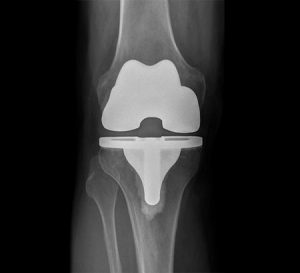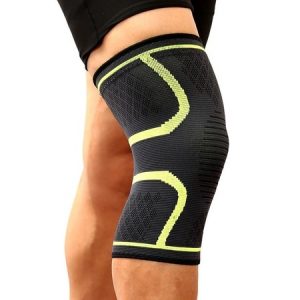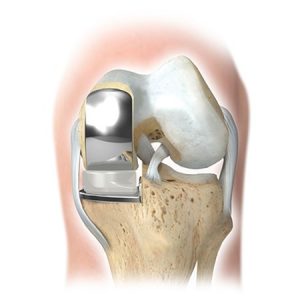What is a Knee Replacement? Types of knee prosthesis
The knee acts as one of the most complex joints in the human body and transfers body weight to the ground. This important organ may be damaged for various reasons, in which case one of the methods of treatment and improving its function is the use of knee prosthesis, which we introduce the work and harms of knee prosthesis.
What is a Knee Replacement?
The knee prosthesis is a method that is used if the initial treatments are ineffective and the knee form returns to its original and natural state. If your knees are damaged due to problems such as for overweight, an accident, fracture or exercise, etc., and you need a knee prosthesis, you should note that prostheses vary depending on the patient’s condition and the reason for using them.

Types of knee Replacement
As you can see, there are many types of knee braces to choose from among the influential factors in choosing the degree of deformity of the knee anatomy, age, weight, level of activity, and general health status of the person. In surgery, the damaged bone or cartilage is replaced with metal prostheses that cover the surface of the joint bones.
According to the mentioned criteria, one of these prostheses may be selected by the doctor:
Half knee Replacement
This type of prosthesis is useful for patients who have injured only one side of the knee.
Primary knee Replacement
The prosthesis consists of three different parts that connect the femur and patella. Primary prostheses are divided into two different types, which are:

Fixed bearing prosthesis
This is the most widely used type of primary prosthesis.
Removable bearing prosthesis
In this prosthesis, the polyethylene in the upper part can rotate on the lower surface, but it is more expensive than the first type and is usually used for younger patients.
Knee Replacement
Another type of knee prosthesis is used for patients who need more stability. These patients usually experience more serious injuries, such as losing one or more knee ligaments (which hold the knee bones together).
Rotating hinge prosthesis
This type of prosthesis is usually made of titanium and has a rotating hinge. It replaces the knee joint or in patients with severe instability of weak knee ligaments or quadriceps muscles and patients with polio.

Application of Knee Replacement:
Although there are four types of bone around the knee joint, implants are used in only three parts, including:
- Thighbone (connecting to the end of the bone and helping the patella slip)
- Knee patella (a dome-shaped piece to cover this area)
Knee Replacement surgery
People and doctors usually prefer to treat other problems with methods other than surgery, but in some cases, using a knee prosthesis may be the only option, including:
Knee pain in the long run
If you have tried all the methods such as exercise, physiotherapy, and prescribed medications, surgery may be the only way. But consult your doctor about this.
Stiffness and swelling of the knees
If you suffer from low flexibility and swelling in this area, a complete replacement of the knee joint and damaged and inflamed tissues will improve the condition. Of course, not all prescriptions are packaged, and the doctor prescribes the final choice according to the circumstances.
Knee Injury
Suppose you have a knee injury or a deformed knee. Surgery can fix the problem by repairing your knee joint and correcting the deformity of your knee joint.
Place your feet on the axis of the knee.
An artificial joint can correct the problem of the legs being inside or outside the axis of the knee.
Also, the connection of the knee prosthesis is usually made using orthopedic cement.

Complications of Knee Replacement:
Using a knee prosthesis, like many other cases, can have side effects. In this case, one of the most common cases is the possibility of bending the knees only up to ninety degrees and making it more difficult to sit and climb stairs. These complications are more common in the elderly over the age of 60 and may affect osteoarthritis.
Other common causes of knee prosthesis infection can be associated with redness or leakage of fluid from the surgical incision. The risk of postoperative infection is only one percent, but that does not mean that you should not be unaware of it, and these infections occur in different types. Still, they can be accurately detected after various tests such as blood tests, radiology or CT scans, and MRI.
Superficial infection
Superficial infection may occur shortly after surgery. If you have a superficial infection in the hospital, you cannot worry, and you can treat it quickly. Still, if the infection does not occur after returning home and indifferent to it, it will most likely become a more severe infection.
Deep infection
This type develops around the knee prosthesis or artificial knee and is more important than superficial infections. Deep infections usually occur after a longer period of surgery. If you do not act in time or the infection is not controlled and treated with the usual methods, you may have surgery.
Care after knee prosthesis surgery:
It usually takes three months for a person to return to normal and perform activities after surgery. Still, depending on the circumstances and methods, it may take six months to a year. The recovery speed of patients depends on age, general health, and strength of the knee joint before surgery. Also, diseases that weaken the immune system affect the healing process.
Artificial joints usually last fifteen to twenty years, but five main reasons can cause problems and breakdowns. Reasons for knee prosthesis failure include:
Erosion and loosening
This can be due to friction due to wear and tear on the joints, damaging the implant surface and cause the knee prosthesis to loosen and damage the bone.

Fracture
If you have a fracture around the knee that causes instability and dysfunction of the knee prosthesis, you will need reconstructive surgery.
Infection
As mentioned earlier, the infection can be a problem, and one of the reasons is the presence and accumulation of bacteria on the surface of the artificial knee.
Instability
Improper use of prostheses or weak tissue around the knee can cause a feeling of instability when walking or standing.
flexibility
In this case, the range of motion decreases, and the movement is accompanied by pain.


